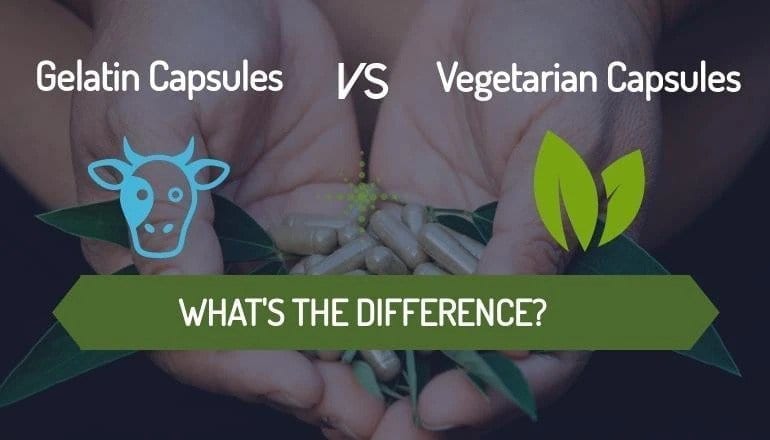If you take any capsule form supplement, do you know what they are made of? Most capsules (perhaps more than 95% of all capsule-form supplements) are gelatin capsules, while the others are vegetable capsules.
Why Gelatin?
The reason has to do with its good physical and chemical properties. Specifically, how easily it moulds into shape, how stable it is and how cheap it is to make, all play a big part. And since gelatin has such a long history of use, its safety doesn’t seem to be an issue.
Most people link gelatin with collagen, the chewy, jelly substance that Asians love to eat. Those can be sourced from cows or pigs. Typically, they start by boiling cartilage, bones and skin for a long time[1].
What you find in the market can either be beef gelatin, pork gelatin or a mixture of both. However, you can’t really tell them apart since it looks exactly the same. If you’re lucky, some companies will specify. For example, a Halal certification may hint that it’s made from beef only.
Although not a reason gelatin is used to make capsules, it does contain nutrients that are good for skin and joints[1].
Vegetable Capsules
These are made from a special form of cellulose, called hypromellose (HPMC). Sometimes you can see HPMC used in eye drops and in controlled-release oral medications[2][3]. Like gelatin capsules, vegetable capsules can be transparent or opaque. Also, HPMC is 100% safe to consume.
Vegetable Capsules VS Gelatin Capsules
So which one is better? Well, they look the same, they do the same. The only real difference is just that vegetable capsules are vegan and they cost more. Some companies prefer to use vegetable ones to cater vegetarian customers, but for most of us, it really doesn’t matter.
References:
1. McKay, R. (2019). What is gelatin made of? Retrieved from: https://www.bhg.com.au/what-is-gelatin-made-of
2. Hypromellose Eye Drops BP. (2015). Retrieved from: https://www.medicines.org.uk/emc/product/457/pil
3. M;, L. (2005). The Use of Hypromellose in Oral Drug Delivery. Retrieved from https://pubmed.ncbi.nlm.nih.gov/15901342/

